Verdict
Ye ole reliable: a budget smartphone that works well across the board. It won’t amaze, but it does what you need it to do.
Pros
- Lightweight and familiar design
- Large 6.5-inch 120Hz display
- All-day battery life
- Clean approach to Android 13
Cons
- Rather sizeable chin
- Performance struggles under pressure
- Camera quality isn’t amazing
-
Reliable, familiar designThe Moto G73 doesn’t break the mould when it comes to design, but in the best way. The dual camera unit in the top corner is familiar, while the device remains light in your hand at just 181g. -
Large battery capacityYou’ll find a rather sizeable 5000mAh battery inside the Moto G73. It means the device can easily last you throughout the day, even when taking on some more battery-intensive tasks such as video watching. -
A large, smooth displayThe Moto G73’s 6.5-inch display boasts a smooth 120Hz refresh rate, 2400 x 1080px resolution, and 405ppi pixel density.
Introduction
Motorola has been making phones since phones became the thing to have. Over recent years, the brand has begun to focus on the budget end of the smartphone market.
Motorola puts out plenty of reliable smartphones that come in under £300, and the brand’s latest device is no exception. The £270 Motorola Moto G73 is a familiar yet reliable smartphone, combining the essentials you need with a form factor that you already know well.
With the Moto G73, you’ll find a huge 5000mAh battery, a 6.5-inch display and a main 50MP snapper on the rear. All of these features combine into a lightweight device with a familiar design, resulting in a friendly and familiar smartphone to slip into your pocket.
But specs aside, how does the Moto G73 stack up to real-world usage?
Design & screen
- Familiar and lightweight design
- Premium display for a budget smartphone
- Built-in fingerprint scanner
A budget smartphone means you’re left with something you’d rather not hold up to your ear in public, right? Not quite.
Even with a £270 price tag, the Moto G73 is a rather good-looking device. Rather than a blocky rectangular shape, the G73 embraces curves both on the body and the screen itself. Not only does this look more aesthetically pleasing than sharp corners, but it also feels better while you’re holding it in hand.
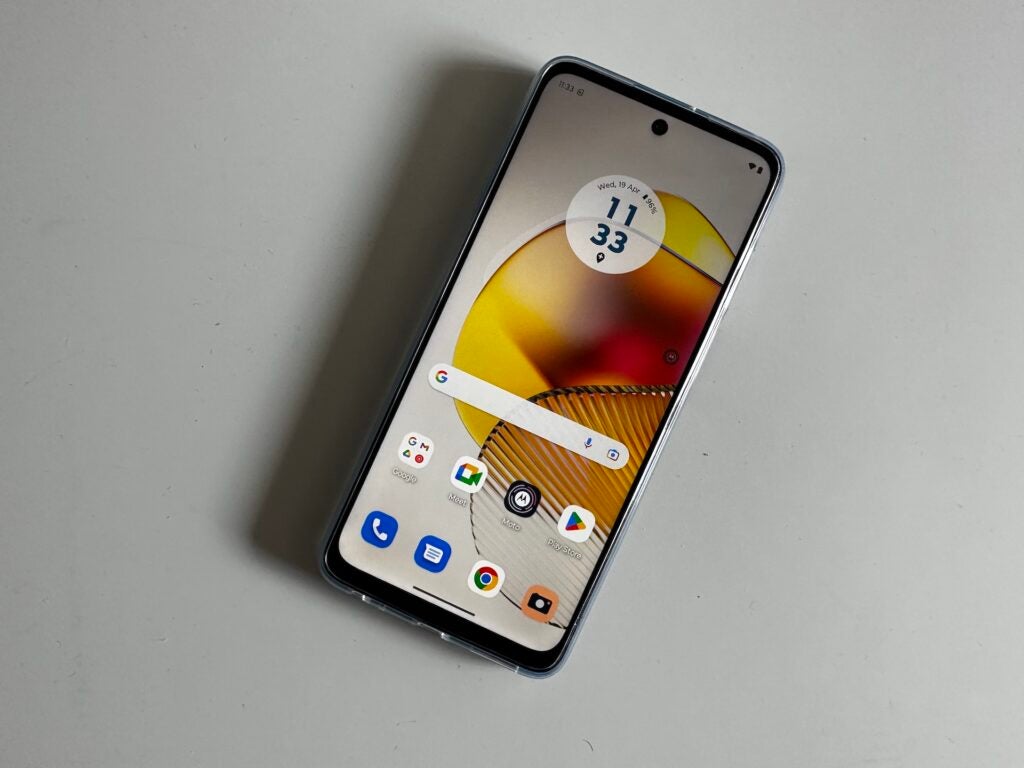
However, my eyes can’t help but be drawn to the pretty big chin on the bottom of this device. This large black bezel somewhat ruins the otherwise sleek and polished look of Motorola’s G73. Considering the device is otherwise pretty good-looking, this does irk when using the device over time.
Flip the phone over and things are more polished, sporting a slightly curved, sleek matte dark blue rear panel. However, rather than the glass panels that most flagship smartphones rock, Motorola has opted for a matte-finished plastic panel to keep the device’s cost down. While the plastic rear feels somewhat soft to the touch, there’s no escaping the fact that it feels like plastic — a stark difference from the solid-feeling OnePlus Nord CE 3 Lite.
If nothing else, the rear of the Moto G73 is very nice to look at. The dark blue colour, which the brand has dubbed Midnight Blue, is very nice to look at. I might even go as far as to say this is one of my favourite colour options on a smartphone.
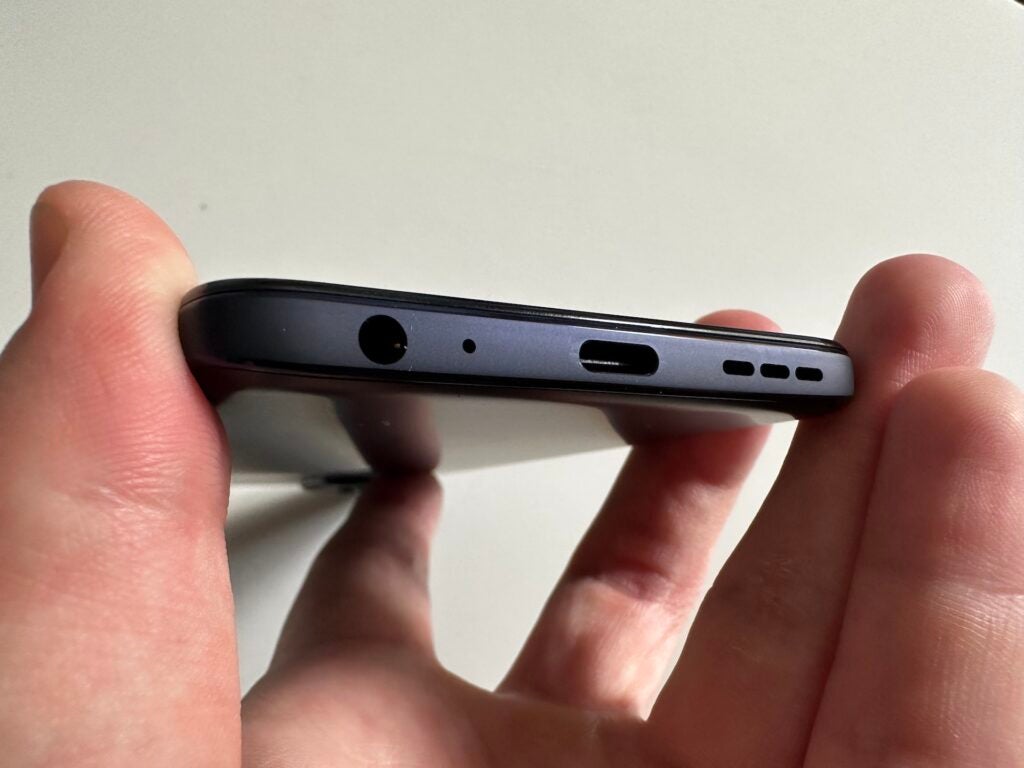
On the left-hand side of the smartphone, you’ll find a SIM card tray. Look down at the bottom, and you’ll find a 3.5mm headphone jack, USB-C charging port, and speaker grill. Flip over to the right, and you’ll find the volume rocker and power button with a fingerprint sensor built-in — all staples of the budget market.
The G73 doesn’t offer any official IP water or dust proofing, though that’s not too much of a surprise at the sub-£300 price point. However, Motorola still reckons it should be splash resistant. Just err on the side of caution, and make sure this phone doesn’t get too soggy.
Turn your attention to the G73’s display, and you’ll find a 6.5-inch LCD panel, with 2400 x 1080px resolution. While this might not sound like anything too impressive, take comfort in the 120Hz refresh rate for responsive and smooth navigation.
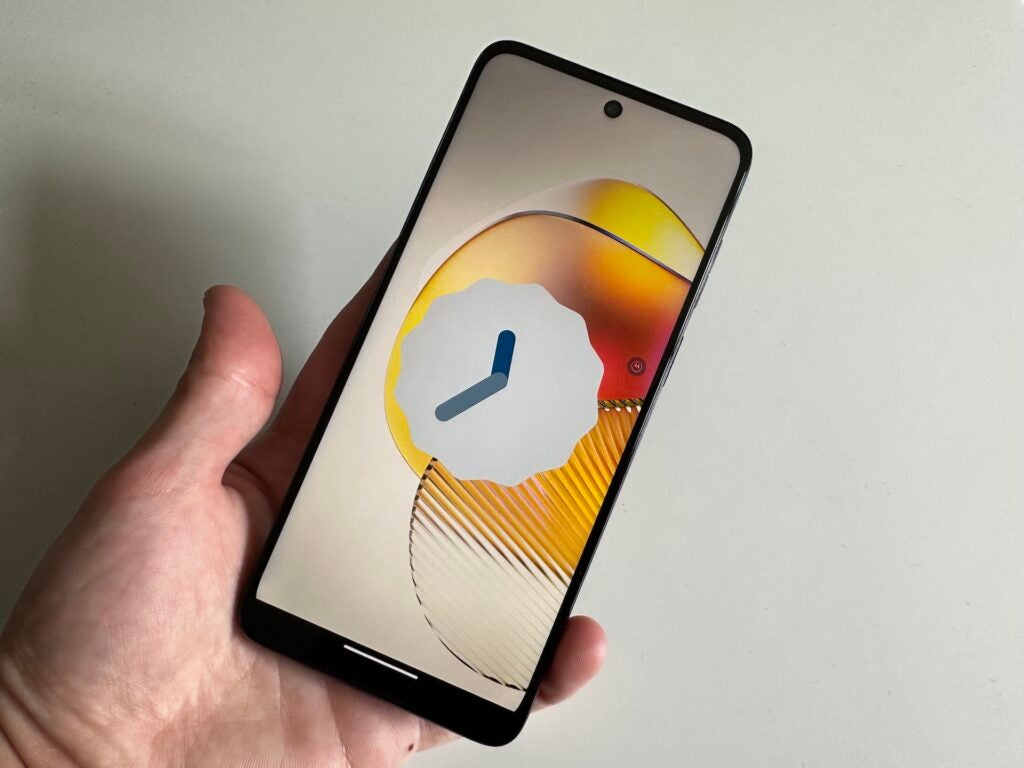
The G73 can crank up to around 700 nits of brightness, which is pretty ample for indoor viewing. However, I found that this budget device begins to struggle once I went outside or into other bright environments.
While there might be more impressive displays out there, the Moto G73 puts up a commendable fight for a sub-£300 budget smartphone. Its 120Hz refresh rate, always-on display, and rear design are standout features. And despite some more compelling budget smartphones out there, I wouldn’t be too upset to slip the G73 into my pocket.
Camera
- High-resolution 50MP main snapper
- Different camera modes to utilise
Sitting firmly at the budget end of the market, don’t expect world-class photos from Motorola’s G73 5G. However, what you will get are reliably consistent shots with snappy shutter speeds.
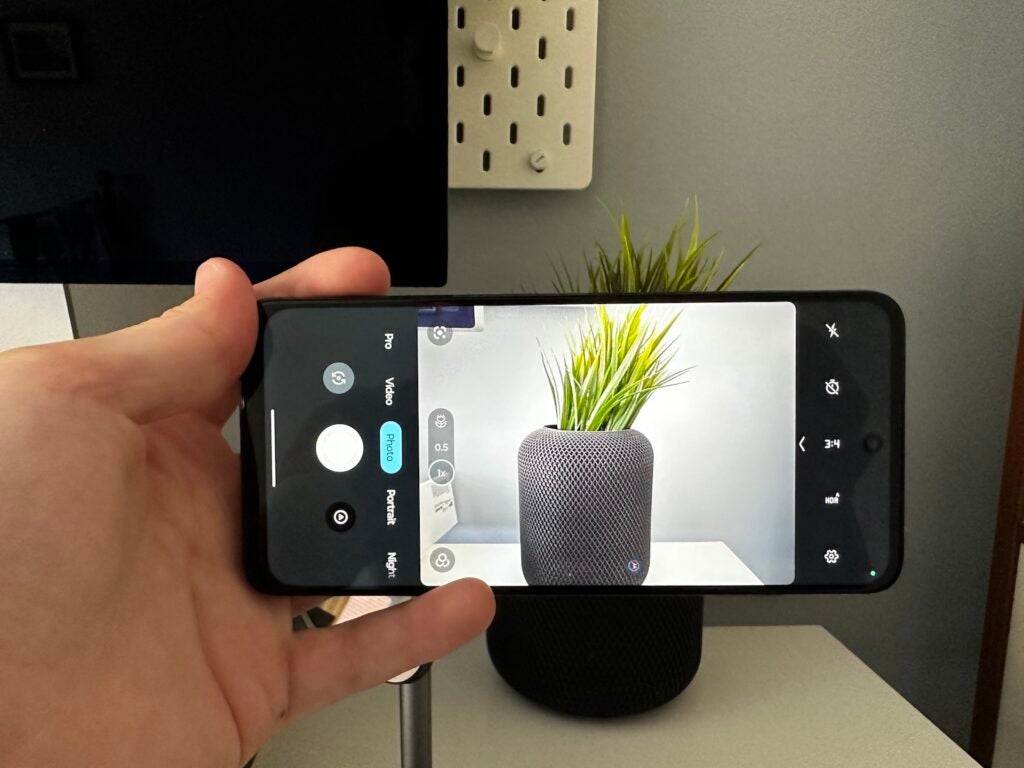
Starting with the main 50MP snapper, you’ll find sharp images with bright colours throughout the frame. You’ll notice that pictures are pretty bright in well-lit conditions, too. This all comes down to the f/1.8 aperture, which can let plenty of light in. The colours can look unnaturally vivid at times though, especially with the phone’s AI mode active, but that’s a complaint of many smartphones at all price points.

While the G73 includes a Portrait Mode, it certainly doesn’t provide the best experience. The images themselves appear very blurry in the viewfinder. Some of this gets fixed during image processing, but shots still wind up more distorted than regular photos. The edge detection here is not very good at all – even simple subjects (such as another phone) cause the G73 to sweat.
While it manages to cut around objects, hands, and people for the most part, you’ll notice that edges are very fuzzy, and bleed into the background blur. Try out a more complex subject, and the G73 completely falls apart.
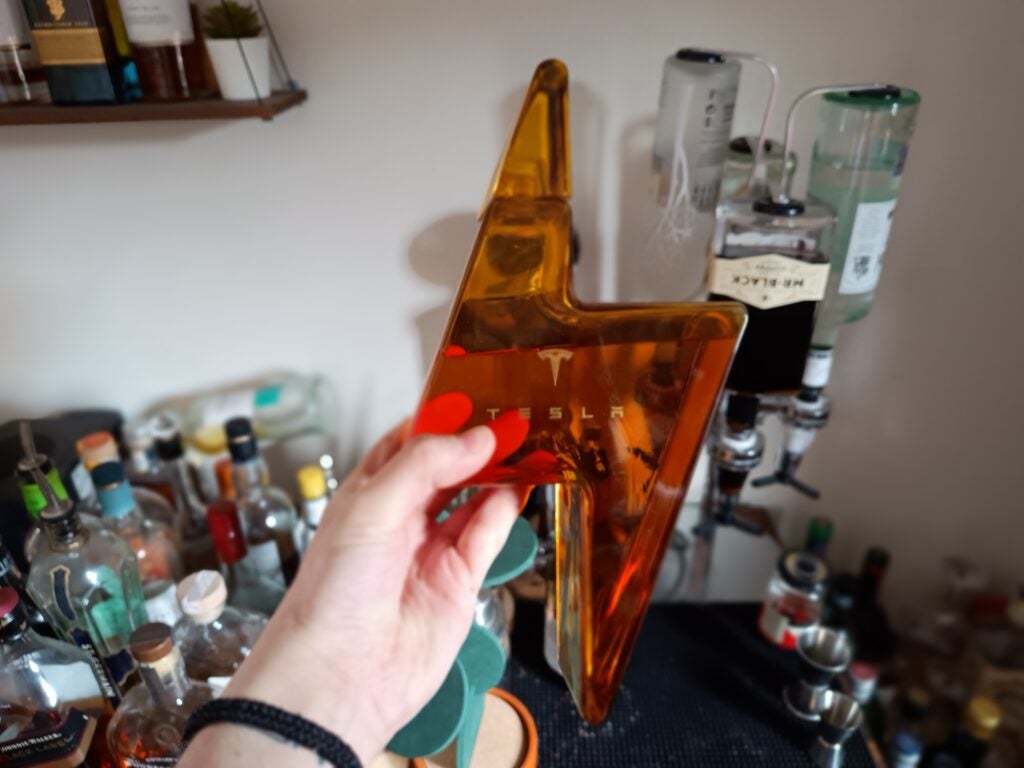
The dedicated night mode is a nice idea, most likely trying to match the capabilities of more expensive smartphones. However, the feature simply doesn’t work very well in practice – I’d recommend steering clear of using this on the G73.
As you’d expect, it attempts to make images taken at night brighter, but ends up with some less-than-ideal results. You’ll often notice a cool (temperature-wise, not street-wise) green/blue-tinted hue to images. On top of this, the shots themselves mostly lack detail, as a result of the sensors used in the camera module.
Sitting below the regular snapper is a 118-degree ultra-wide sensor. What you’ll immediately notice here is that pictures are lower quality than those from the main snapper. The ultra-wide is only 8MP, so can’t capture nearly as much detail nor make use of pixel-binning tech like the main sensor.

Thankfully, images are generally bright and detailed on the surface, though with a notable lack of sharpness when you zoom in. There’s also some pretty obvious distortion around the edge of ultra-wide snaps, lacking the AI prowess to correct this in post-processing.
In the camera app, you can zoom in to 2x for some close-up shots. However, this is completely digital zoom, so you’ll experience the same lack of detail from simply zooming in on a standard photo you’ve taken. There’s also a macro shooting mode that utilises the ultrawide sensor, but like every other budget phone around, it’s nothing to write home about.

Moving over to the front selfie snapper, and the G73 puts up a fight. The hole punch camera is a 16MP sensor, with an f/2.4 aperture. Thanks to a pretty decent megapixel count, it produces some pretty good front shots. Images are pretty filled with detail, and colours are once again impressively accurate. In harsher lighting conditions, shots quickly become grainy, which is largely down to the aperture here.
As for video, the rear camera can record in 1080p at 60fps. It’s a far cry from the 4K shooting you’ll find on most smartphones these days, but it’s fairly typical to expect from a phone at this price point. The front-facing camera, on the other hand, is limited to 1080p@30fps. The lack of optical image stabilisation means that videos from both cameras appear quite shaky, so on-the-move footage probably isn’t the best idea.
Performance
- Handles everyday tasks easily
- Struggles to maintain performance under pressure
- Some of Motorola’s software elements can be confusing
Inside the Moto G73, you’ll find the MediaTek Dimensity 930 chipset, and it’s safe to say this processor is definitely on the budget side of things. It’s designed for lighter tasks, and can handle everyday usage quite well, but it can’t quite match the performance of phones that cost not too much more.
When browsing the web, checking emails, or scrolling through social apps, I didn’t come across any sort of stuttering. Even when playing some lighter games (Solitaire, if you must know my poison), the smartphone can hold its own.
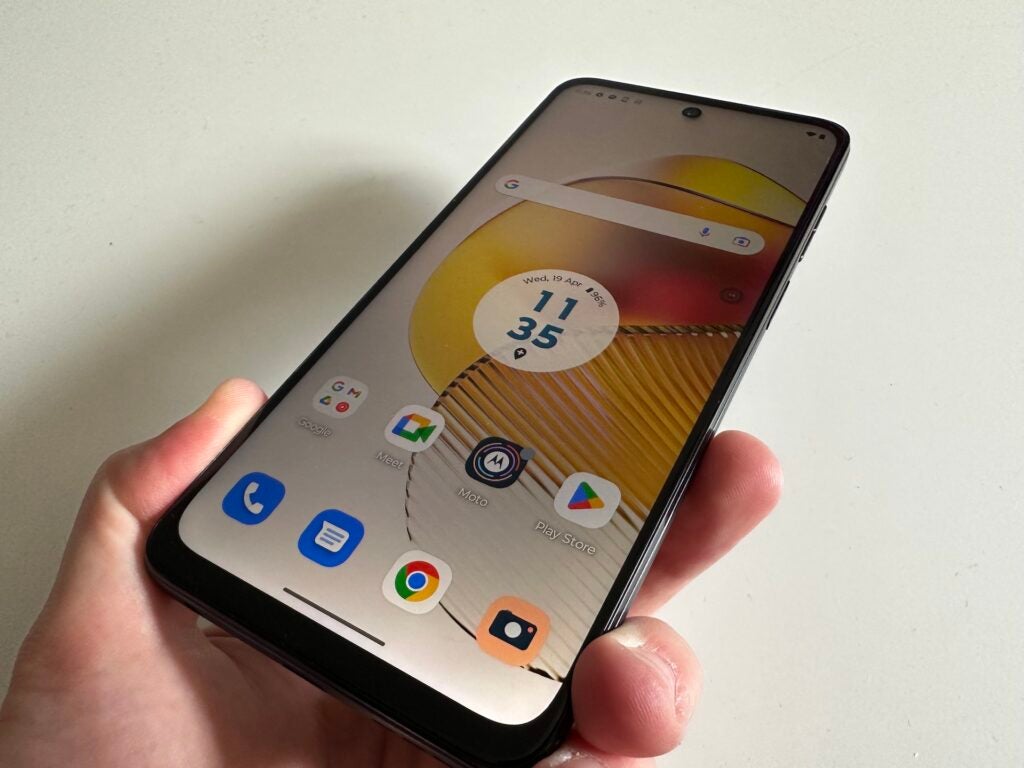
However, when we tried out Asphalt 9 for some more complex gaming, the Moto G73 began to run very hot and became laggier than I’d expect. It also began to drop some frames here and there, though nothing too major.
All-in-all, it’s actually pretty impressive for a sub-£300 smartphone. The Moto G73’s performance is pretty solid when you’re using the device for everyday tasks. Multitasking will begin to slow things down on the phone, but that’s something you can work around.
For a phone of this price, it’s important to remember who’s most likely to be buying it. If you’re looking to squeeze out performance, this isn’t the device for you. But if you’re looking for a smartphone to carry out your regular, everyday activities, then you’re on to a pretty reliable option.
When we put the G73 through some benchmarking tests, it managed to produce some pretty impressive results. Running Geekbench 6 on the phone, the phone managed a single-core score of 915, and a multi-core score of 2265.
But how does this result stack up to other Android devices around? It slightly bests the Poco X5, which couldn’t quite break 700 on the single-core score, and only just passed 2000 on the multi-core. It’s more in line with the slightly more expensive OnePlus Nord CE 3 Lite, both in terms of CPU and GPU performance.
The Moto G73 runs on Android 13, and things feel familiar, especially compared to other Motorola smartphones. You won’t find much, if any, bloatware on the G73, which is a refreshing change from other budget smartphones around. There’s a dedicated Moto app that you can use to enable further UI customisations, and tweak navigation settings such as gestures.
With only a speaker grill at the bottom of the device, sound isn’t exactly the G73’s strong suit. Audio has some level of depth to it, but often sounds pretty tinny and constrained. Any low-end you’d expect while watching content or listening to music begins to get muddied with the other elements of sound.
There also aren’t any spatial audio features such as Dolby Atmos, though this isn’t surprising for a budget smartphone. As you may expect, you’ll get significantly better audio out of a pair of headphones.
Connectivity-wise, the G73 packs everything you’d expect from a budget smartphone in 2023, including 5G for fast mobile connectivity on the go, Wi-Fi 5, Bluetooth 5.3, and NFC for mobile payments.
Battery life
- Easily lasts a full day
- Charges to full pretty quickly
The Moto G73 comes with the same 5000mAh battery found in most smartphones these days, and in my experience, doesn’t struggle to last all day without reaching for a charger. However, you may still notice that the 5000mAh doesn’t last quite as long as it does on other smartphones with the same-sized battery.
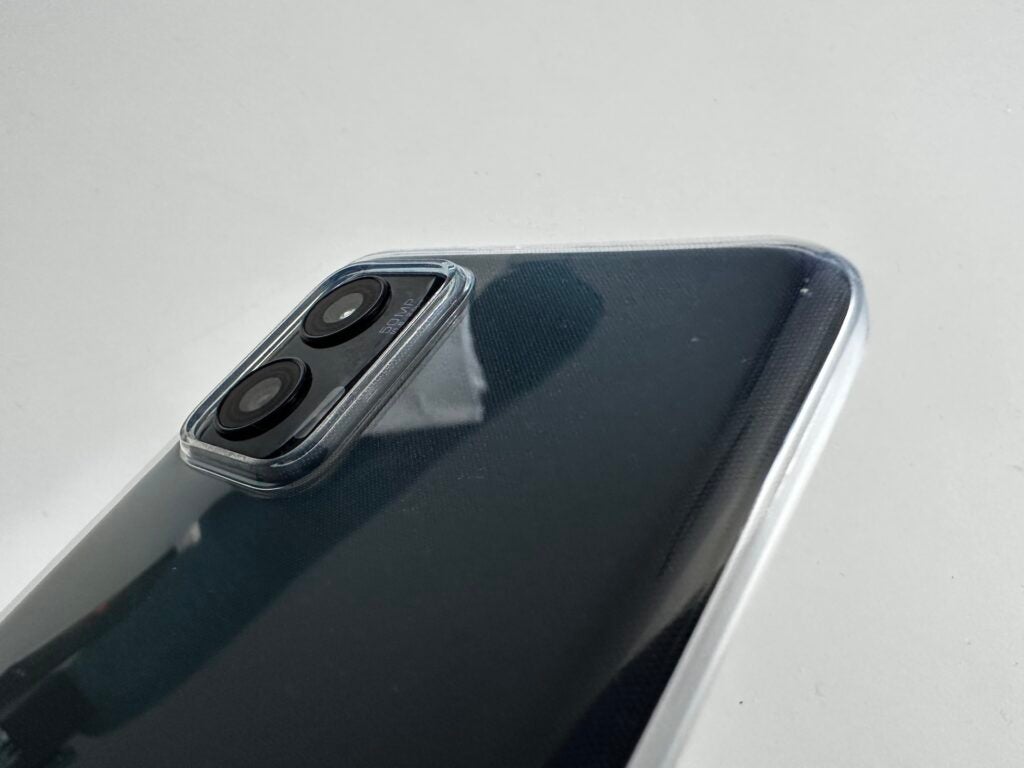
After an hour of watching content on Netflix, the G73 lost 17% of its charge. Half an hour of light gaming burned through a more reasonable 11%, though this is still quite high for light gaming. If you keep on top of our other reviews, you’ll notice that these numbers are a little higher than the average, and that reflects average use too.
While you won’t find any sort of rapid charging on the Moto G73, it does still include fast charging. You can take advantage of 30W charging speeds via a cable on the G73, which is fine for a phone at this price point but not industry-leading.
In tests, the G73 took just 27 minutes to charge from 0% to 50%, though it took one hour and twenty minutes to go all the way to 100%. Being able to juice to full in just over an hour is pretty impressive by any standards, but especially for a sub-£300 device. And if you’re in need of a quick boost before you head out, the G73 can take that on as well — charging up to 27% in only fifteen minutes.
Should you buy it?
You want a cheap all-rounder: It might not be exceptional in any one department, but the Moto G73 does what you need in most scenarios.
You want a great camera: While the 50MP camera offering sounds impressive on paper, real-world results are sometimes disappointing.
Final Thoughts
There’s one word I’ve kept coming back to throughout this review to describe the Moto G73 – reliable. Motorola’s latest budget Android smartphone offers a pretty decent suite of specs, features, and performance across the board.
The camera isn’t anything to write home about, but it will work for casual snaps on the go. You can say the same for most other features on the G73, bringing us back to the word “reliable”. You know what to expect, and that’s exactly what you get.
When all is said and done, you’re unlikely to be disappointed with the Moto G73 as a budget smartphone. It’s solid, if not too exciting, across the board.
FAQs
No, there’s no official IP rating for dust or water resistance, but Motorola claims it’s splashproof nonetheless.
Jargon buster
mAh
An abbreviation for milliampere-hour and a way to express the capacity of batteries, especially smaller ones in phones. In most cases the higher the mAh, the longer the battery will last but this isn’t always the case.
LCD
The type of display usually used on cheaper and mid-range devices. Lacks the punch on an OLED panel.
















